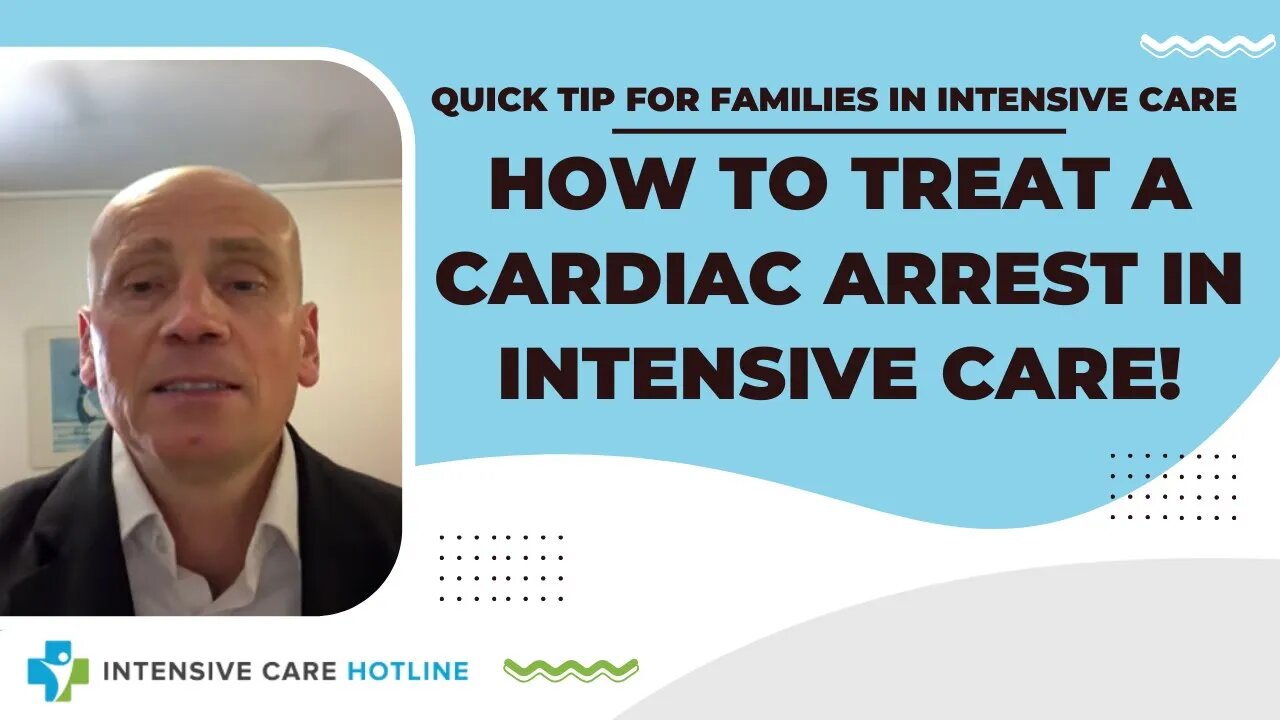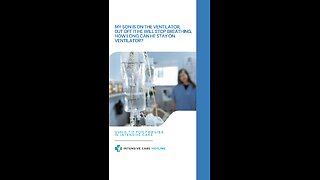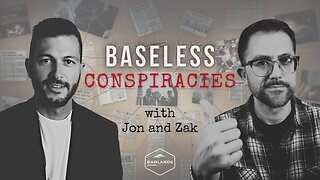Premium Only Content

Quick tip for families in Intensive Care: How to treat a cardiac arrest in Intensive Care!
Quick tip for families in Intensive Care: How to treat a cardiac arrest in Intensive Care!
Book your free 15 minute phone consultation here
http://intensivecarehotline.com/scheduling-appointment/
Call directly 24/7
+1 415-915-0090 USA/Canada
+44 118 324 3018 UK
+6141 094 2230 Australia
Email support@intensivecarehotline.com
Get 1:1 consulting and advocacy
1:1 phone counselling
http://intensivecarehotline.com/one-on-one-counselling/
Become a member for families of critically ill Patients in Intensive Care
https://intensivecarehotline.com/intensivecaresupport-org-membership/
Immediate action steps http://intensivecarehotline.com/take-control-take-charge/immediate-action-steps/
https://intensivecareathome.com
And if you need a medical record review , click on the link and we can help you with reviewing your loved one’s medical records while they’re in ICU.
https://intensivecarehotline.thrivecart.com/review-of-medical-records/
Hi, it’s Patrik Hutzel from intensivecarehotline.com with another quick tip for families in intensive care.
So, one of the most common questions we’re getting is, “What happens after cardiac arrest? What should happen? What does treatment look like?” And so forth. So, there are a few scenarios what can happen after cardiac arrest, and I want to run through them in this quick tip.
So, after cardiac arrest, people often get admitted into intensive care. They are unconscious. They might have had some sort of hypoxic or anoxic brain injury, depending on what’s being referred to as downtime. How long somebody needed to be resuscitated? How long it took to get a pulse back and oxygen perfusion of the organ? So, it really depends on that.
So then, when patients go into ICU, they might go into the catheter lab and there you can see, or you can detect, where’s the blockage of the heart muscle? Which coronary arteries are blocked? Does cardiac surgery need to be performed? Does it need a stent? Does it need a dilation of the coronary arteries? So, those are questions that can be answered initially before admission or on admission into ICU. But if a patient can go into catheter lab or not is also dependent on how unstable a patient is. So, it depends on whether they are on multiple inotropes or vasopressors already. So, it depends on all of that.
Next, some patients after cardiac arrest go into cooling therapy for 24 to 48 hours. Body temperature is usually being cooled down to 33 to 34 degrees for 24 to 48 hours. And then the patient is being warmed up again by 0.1 degrees of Celsius every hour. So, a very slow warm-up process. And the reason for the cooling therapy is that organs are protected for a period of time, including the heart.
Next, other things that then happen often after cardiac arrest is an ultrasound of the heart that can be done externally, or it can also be done with a TOE, a transesophageal echocardiogram through the esophagus. Camera is going down into the esophagus, sitting next to the heart and an ultrasound can be done that way. This is often done to determine ejection fraction of the heart.
Ejection fraction means the contractility of the heart is being assessed. And if it’s less than sort of 35, 30%, that’s very concerning then, patient is often inotrope or vasopressor dependent. Medications such as adrenaline, noradrenaline, dobutamine, milrinone, sometimes levosimendan are being used. For our audience in the U.S, often adrenaline is epinephrine, noradrenaline is norepinephrine or Levophed, and also levosimendan can be used to improve the contractility of the heart.
Other things that can happen is a PA (Pulmonary Artery) catheter or a Swan-Ganz catheter might be inserted into the pulmonary artery to determine cardiac output and cardiac index studies, again, to see how strong the heart can contract and pump. Mixed venous arterial gases are sometimes being done, again, to assess the functionality of the heart.
If all of that fails, sometimes patients can be put on ECMO for heart failure. Especially if the heart is really weak and not pumping properly, then ECMO can be commenced and ECMO (Extracorporeal Membrane Oxygenation) will take over the function of the heart for a period of time. And the heart might have time to recover to a certain degree.
Again, if all of that fails, maybe a heart transplant is next. If a heart transplant is next, the step from ECMO to a heart transplant is often to go on an LVAD (Left Ventricular Assist Device) or an RVAD (Right Ventricular Assist Device) to support either the left ventricle or the right ventricle, sometimes even both. And that can be used as a bridge to a heart transplant.
Continue reading at: https://intensivecarehotline.com/blog/quick-tip-for-families-in-intensive-care-how-to-treat-a-cardiac-arrest-in-intensive-care/
-
 0:55
0:55
Intensive Care Hotline
18 hours agoMy Son Is on The Ventilator, But Off It He Will Stop Breathing. How Long Can He Stay on Ventilator?
101 -
 2:33:04
2:33:04
Badlands Media
11 hours agoBaseless Conspiracies Ep. 147
145K17 -
 4:33:42
4:33:42
Drew Hernandez
7 hours agoISRAEL BOMBS GAZA HOSPITAL ON LIVE TV KILLING AT LEAST 20 INCLUDING JOURNALISTS & CIVILIANS
17K15 -
 2:55:23
2:55:23
TimcastIRL
6 hours agoTrump Orders Specialized National Guard Units To Combat Crime In Cities, Dems Furious | Timcast IRL
196K138 -
 6:22:03
6:22:03
SpartakusLIVE
8 hours ago#1 Rocket CHAMPION of Verdansk wields UNSTOPPABLE new META
77.2K5 -
 2:55:11
2:55:11
Barry Cunningham
8 hours agoPRESIDENT TRUMP MADE TODAY A VERY BAD DAY TO BE A DEMOCRAT!
94.8K59 -
 1:15:29
1:15:29
Flyover Conservatives
1 day agoFrom Cool to Cringe: How Democrats Lost America’s Ear | FOC Show
44K13 -
 8:19
8:19
MattMorseTV
11 hours ago $4.94 earnedTrump is ACTUALLY DOING IT.
43.2K38 -
 11:30:43
11:30:43
ZWOGs
14 hours ago🔴LIVE IN 1440p! - Tarkov w/ Casey & crgoodw1n, Kingdom Come Deliverance, & More - Come Hang Out!
36.9K5 -
 2:30:56
2:30:56
We Like Shooting
18 hours ago $2.71 earnedWe Like Shooting 625 (Gun Podcast)
35K1